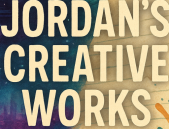Introduction:
I’ve tried everything—timers, to-do apps, bullet journals, color-coded calendars that looked like a unicorn exploded. None of it stuck. I would stick with it for a few hours, a few days, maybe even a few weeks, but eventually it just… didn’t click. If you’re neurodivergent like me (ADHD, autism, the full quirky cocktail), you probably know the feeling: trying to cram your chaos-brain into someone else’s rigid box and wondering why it keeps catching fire.
But I finally found something that works. Not perfectly. Not every day. But consistently enough that I feel like I’m no longer drowning in my own mental clutter. It’s a hack that actually works with my brain—not against it. And no, it doesn’t involve waking up at 5 a.m. or drinking bone broth. It makes me feel like I have actually accomplished something, instead of staring off into the void day after day.
The Problem with “One-Size-Fits-All” Productivity Tips
Most productivity advice assumes your brain follows a linear path: plan, execute, finish. Neurodivergent brains don’t play that way. Our timelines zigzag. Our focus is like a strobe light. We bounce from task to task like a rabbit on speed. And traditional systems? They’re often too rigid or too boring, and we abandon them out of frustration, guilt, or sheer sensory overload.
Time-blocking makes me anxious. Habit trackers mock me. Bullet journals become graveyards of good intentions. I still bullet journal, but I have adapted it over the years to incorporate what DOES work, and discard what doesn’t. These systems weren’t designed for brains that prioritize novelty, detour into hyperfocus, or short-circuit under pressure.
What I Realized About My Brain and Why It Matters
Once I stopped blaming myself for “failing” every system and started understanding how my brain actually works, everything shifted. I realized I wasn’t lazy—I just needed different tools. I needed dopamine hits, flexibility, and small wins that snowball.
I started treating my brain like an ally instead of a malfunctioning machine. When you work with your brain instead of forcing it to play by someone else’s rules, you stop spinning your wheels.
The Hack That Works (For Me)
Here it is: I use what I call the Dopamine Checklist. It’s a system built on momentum and positive reinforcement. Here’s the magic:
- I break every task into the smallest possible steps. Not “do laundry”—it’s “gather dirty clothes,” “start washer,” “switch to dryer,” “put away socks.”
- I check off everything. Even “brushed teeth” or “sent one email.”
- I build in rewards: finish 3 tasks, I get a 10-minute scroll break or a fancy coffee.
- Some days, I start with the easiest task just to get a win. Other days, I tackle something annoying first to ride the triumph high.
It’s simple, flexible, and gives my brain that sweet hit of “I did a thing!” which keeps me going.
Why This Hack Actually Works
ADHD brains thrive on novelty and immediate gratification. By breaking things down and celebrating tiny wins, I’m hacking the dopamine system instead of letting it sabotage me. I can actually see things being checked off in real time. And that first thing on there being something I have already done? It gives my brain that dopamine hit that drives me to keep going.
It’s also guilt-resistant. If I only get through a few micro-tasks? Still a win. There’s no “all or nothing” pressure. That binary mindset is poison for neurodivergent folks. We don’t all fit into a pre-defined box, and we shouldn’t have to try to. This method lets you build momentum without burnout. Every day is a clean slate.
How It Transformed My Productivity (And My Self-Worth)
Before, I’d go days feeling like a failure because I couldn’t stick to a system. Now? I have tangible proof I’m getting stuff done. I finished a short story using this method. I finally started tackling my laundry pile without the dread paralysis.
More than that, I feel capable. Like I’m not broken. Just wired differently—and that’s not a flaw. That’s just reality.
How You Can Try It for Yourself
Start with a sticky note or a note app:
- Write down 3–5 super small tasks.
- Include something you’ve already done today and check it off immediately.
- Add a reward. Doesn’t have to be big—music, coffee, five minutes of staring into the void.
- Keep it flexible. No rigid timelines. Just movement.
- Do it again tomorrow. Or don’t. You’re still valid.
Make it yours. Add stickers, color codes, or memes. Whatever keeps your brain engaged.
Conclusion
You don’t need to fix yourself. You don’t need to be more productive by someone else’s definition. Productivity isn’t about hustle—it’s about doing what matters in a way that doesn’t crush your soul.
So, screw the one-size-fits-all advice. Build your own toolbox. Honor your brain. And don’t forget to check off “read this post” on your list—because look at you go, badass.
screw the one-size-fits-all advice. Build your own toolbox. Honor your brain. And don’t forget to check off “read this post” on your list—because look at you go, badass.
Got a hack that works for your brain?
Drop it in the comments or tag me on social. Let’s share the tools that actually serve us—not the ones that shame us.
Follow me for more unapologetically neurodivergent, spoon-aware, self-loving tips on surviving this chaotic world.
- 🌟 More from me on Medium
☕ Support my work on Buy Me a Coffee
📰 Newsletter on Substack
📚 Facebook: LPWrites - 🐦 Follow me on X: @destinysintfree
